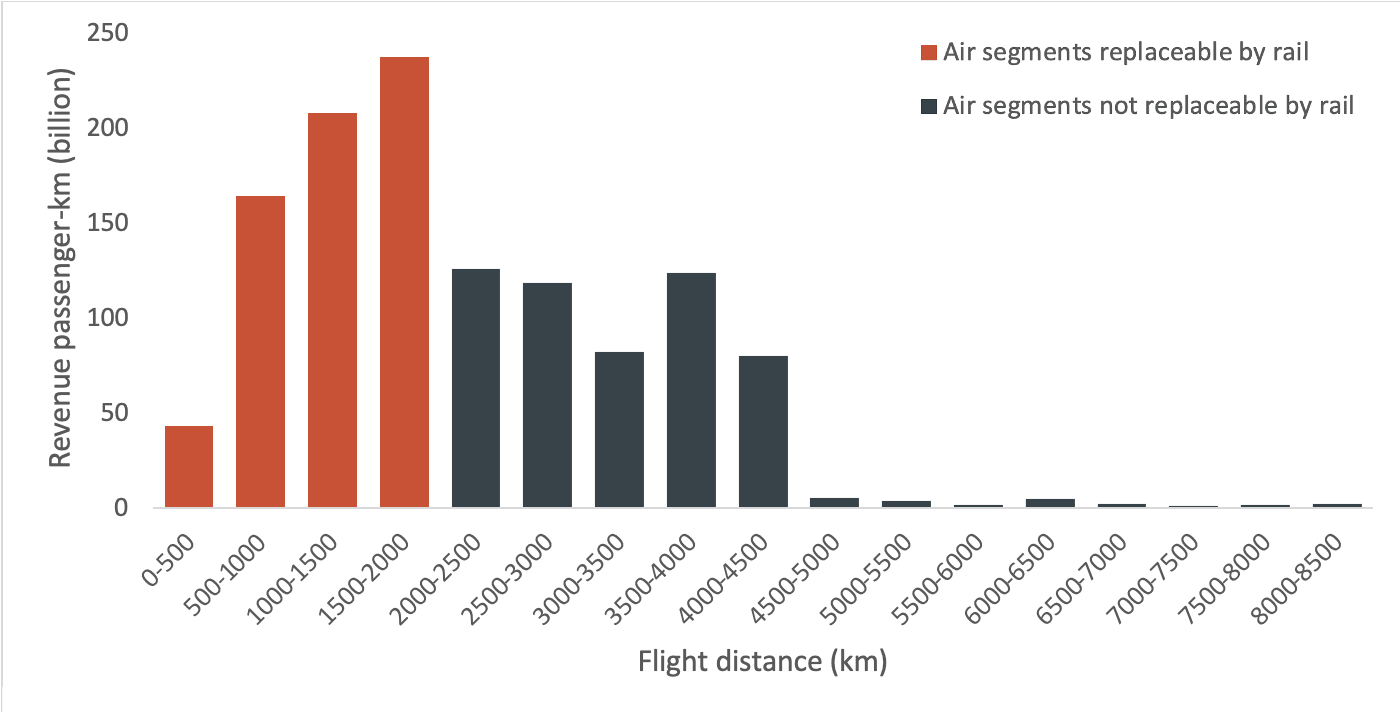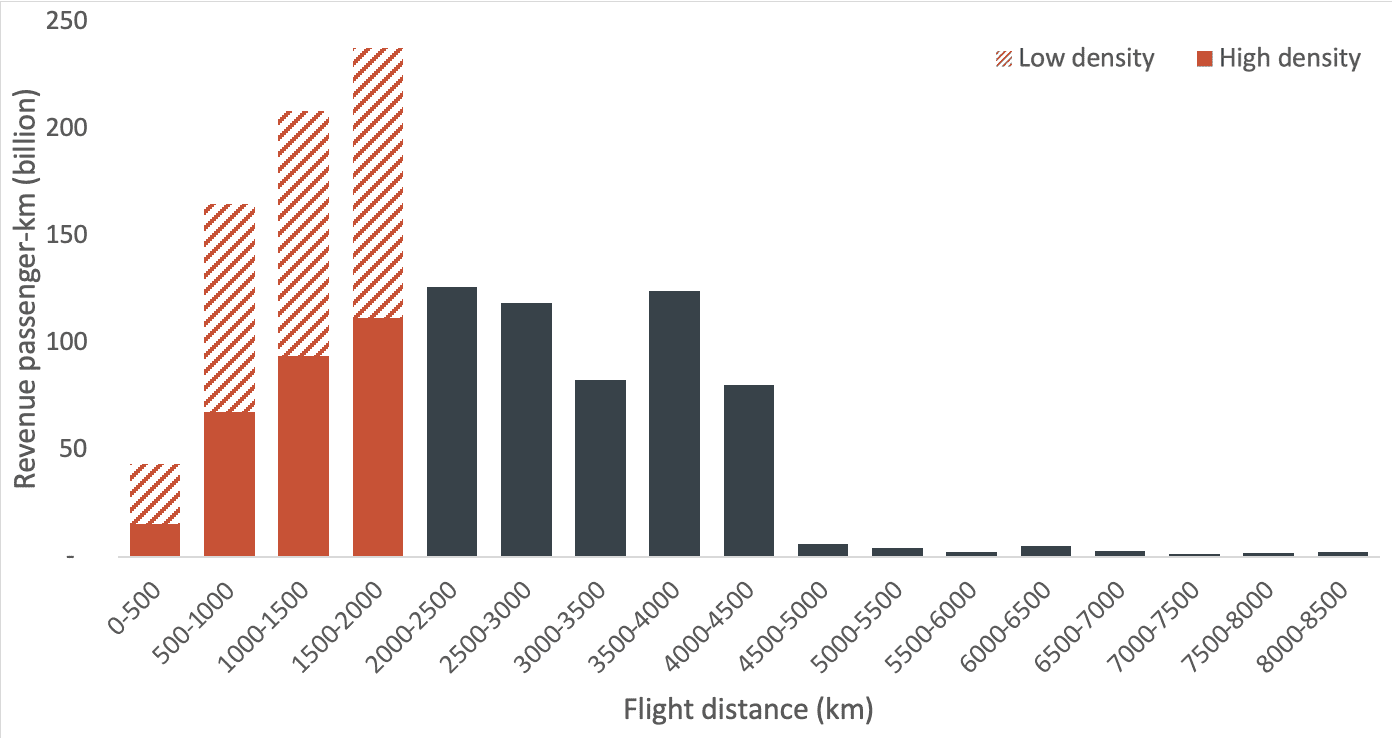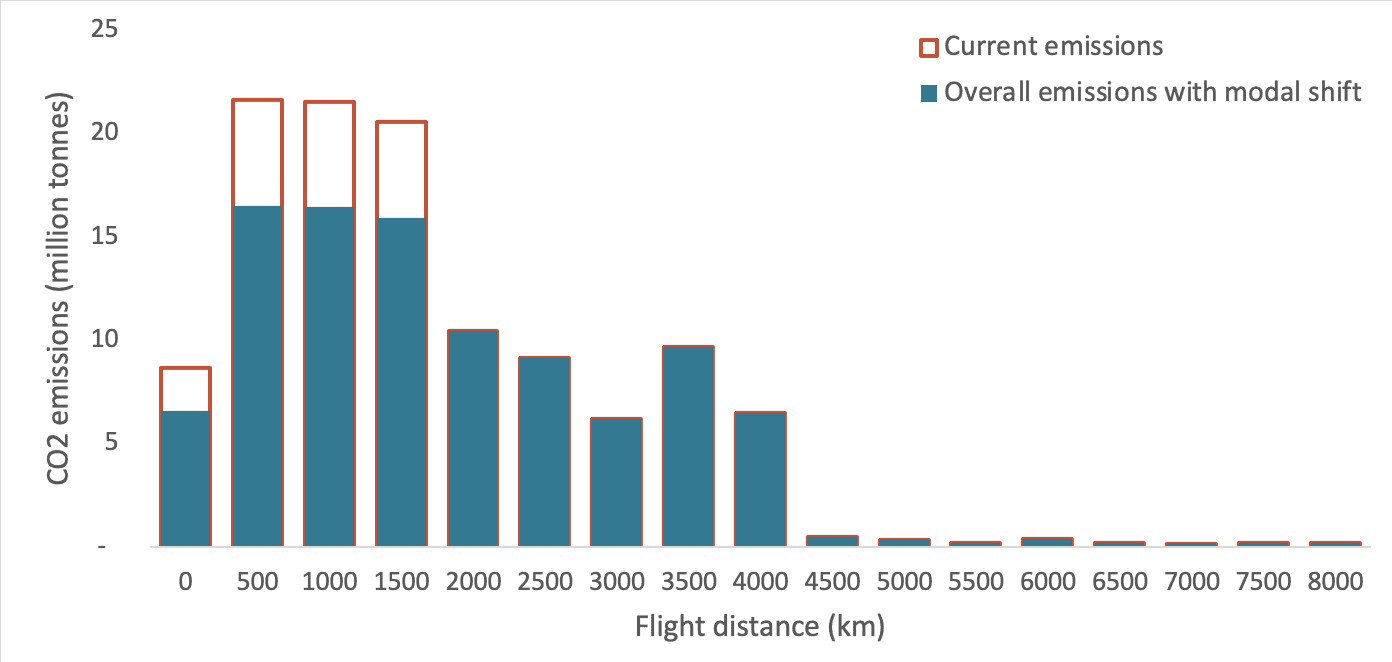Amid all the converse about cutting down aviation emissions, modal shift does not get a good deal of air time. Nonetheless, the spread of significant-velocity rail (HSR) over the earlier ten years has designed trains a aggressive, low-carbon choice to shorter-haul flights. I can testify to this personally: because the launch of the Beijing-Shanghai HSR in 2011, my vacation amongst the two cities has been entirely on trains instead than flights. Far more broadly, aviation decarbonization roadmaps have also began including modal change as an critical lever for minimizing the carbon footprint of travel.
Proximity to city facilities and simpler protection checks give HSR strengths in phrases of vacation time. Tourists getting a teach from Madrid to Barcelona (~500 km) get there in underneath 3 hours a prepare from Beijing to Shanghai (~1300 km) usually takes much less than five several hours. Due to the fact coach vacation above these distances is competitive with flying, it is most likely that an comprehensive HSR network could have a materials impact on air visitors. Transportation and Ecosystem estimates that intra-EU air targeted visitors could be lower by 25% if high-velocity rail service ended up available amongst all major metropolitan areas in the area.
In the U.S., meanwhile, the fastest train (Amtrak’s Acela Convey) runs at 50 % the pace of its overseas counterparts and demands seven several hours to vacation involving Boston and Washington D.C. (~700 km). HSR growth in the U.S. has its champions, but the political difficulties it faces appear to be wonderful. Whether Joe Biden’s one trillion greenback infrastructure bill and his declaration of an “infrastructure decade” will assist improve the program remains uncertain.
This short article investigates the probable of an air-to-rail modal shift in the US, and its weather implications. To identify routes on which a modal change might happen, we take into account two things: journey distance and population density. Then we determine the carbon emissions implications of these kinds of a shift.
Past study demonstrates that HSR can generally substitute for flights up to 1000 km in distance, and they are most competitive for journeys under 700 or 800 km. Nonetheless, to estimate the highest possible, we need to look at the edge circumstance: some HSR routes in China have been competing with flights around 1000 km, with the longest route reaching virtually 2300 km. Employing flights underneath 2000 km as a threshold, Determine 1 illustrates the distance segments replaceable by higher-speed rail in the US (no matter whether or not the rail infrastructure exists yet), which accounted for 54% of domestic site visitors and 62% of CO2 emissions in 2019. The replaceable segments in the figure symbolize the contribution that HSR could make as a very low-carbon different to air journey.

Figure 1. Modal change possible primarily based on flight distance
The figure reveals that small-haul flights make up 50 % of the U.S. domestic market and are responsible for 62% of the emissions in 2019. The emissions share is higher than the visitors share for the reason that small-haul flights on ordinary are appreciably much more carbon-intense than for a longer period flights, shown by past ICCT investigation. Flights below 500 km, in individual, can emit a few situations as a great deal CO2 as a train trip covering the very same length (Desk 1). But brief practice routes are reasonably exceptional since they are uncompetitive with autos.
Table 1. Common carbon depth of 2019 US domestic flights by length vs . passenger rail
| Distance | Carbon Intensity (gCO2/passenger-km) | |
| Plane | Train* | |
| <500 km | 199 | 64 |
| 500–1000 km | 131 | |
| 1000–1500 km | 103 | |
| 1500–2000km | 86 | |
| >2000 km | 79 | |
*The average of diesel and electric powered trains, primarily based on the present route blend, with a carbon depth of 79 g CO2/passenger-km for diesel and 38 g CO2/passenger-km for electric powered (supply: Miller, 2020)
We also think that HSR would be created only between rather dense urban places, taking into consideration its large design price tag. We use a route’s once-a-year passenger load as a proxy for population density. We estimate that U.S. domestic routes with 300,000 travellers per 12 months or a lot more (stable orange bars in Figure 2) are inbound links amongst dense city places. A little a lot less than 50 percent of the shorter-haul flights (below 2000km in this scenario) meet up with this criterion, and the brief-haul, substantial-density segment as a whole signifies pretty much a quarter (24%) of all round U.S. domestic traffic in 2019.

Figure 2. Modal shift potential based on distance and populace density
Combining the route screening outcomes and carbon depth of both modes, we can estimate the most emissions reduction from a modal shift to rail. CO2 emissions in 2019 would have been 15% reduce if vacationers experienced changed flights with electric-driven teach travel. For shorter haul segments (< 2000km), emissions would have fallen by 23%. Smaller emission reductions—of 8% and 13%, respectively—would have resulted if the trains had operated with today’s diesel and electricity mix.

Figure 3. CO2 emissions by flight distance with modal shift to rail (assuming electric trains, and a carbon intensity of 38 g CO2/RPK)
Even if high-speed rail infrastructure were available, not all travelers on the identified routes would switch. Research has shown that competing HSR service can reduce air traffic by 7-28%. For instance, a study estimates that about 7% of intra-European short/medium haul traffic can be substituted by rail with no increase in travel time the ratio increases to 17% if travel time is allowed to increase by 20%. In China, the introduction of HSR led to a 27-28% reduction in demand on competitive flight routes in the early years (2010-2013), and a 10% decrease in monthly departures in the longer term (2011-2016), according to two studies.
These studies estimate only voluntary shifts from air to rail, but there are many ways to promote additional modal shift. On one hand, lower ticket fares and better service can incentivize travelers to choose trains over planes. Increasing the connectivity between train stations and local transport also helps. On the other hand, government policies can directly bring about modal shifts. For example, France passed a law banning direct flights where a train trip of under 2.5 hours is available. Many European airlines established partnership with local railways to replace some of their short-haul flights these include collaborations between KLM and NS, Lufthansa and Deutsche Bahn, and Austrian Airlines and ÖOB. These partnerships demonstrate that the relationship between aviation and rail can be synergistic rather than purely competitive. Also, particularly under 500 km, most of the environmental benefits of HSR could come from getting the many people who drive out of their cars, rather than the relatively few who fly out of planes.
While aircraft and fuel technology will continue to be key to decarbonizing aviation, modal shifts can make unique contributions. Specifically, they reduce pressure on the airline industry to achieve deep decarbonization amid rapid growth, while not jeopardizing demand for flights on more lucrative long-haul operations. Be on the lookout for a major ICCT report that shows how HSR fits into the deep decarbonization of global aviation.
Will the U.S. build high-speed rail? We don’t know. But given the clear benefits of modal shifting, the rationale for building a robust rail system is stronger than ever.









More Stories
9 Best National Parks to Visit in December » Local Adventurer
Fitness and Longevity as the new Lifestyle
Things to do on New Years Eve in Seattle 2023